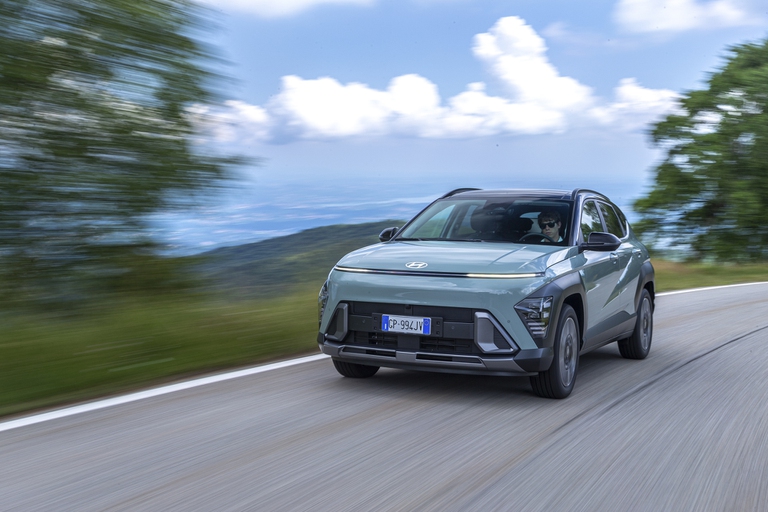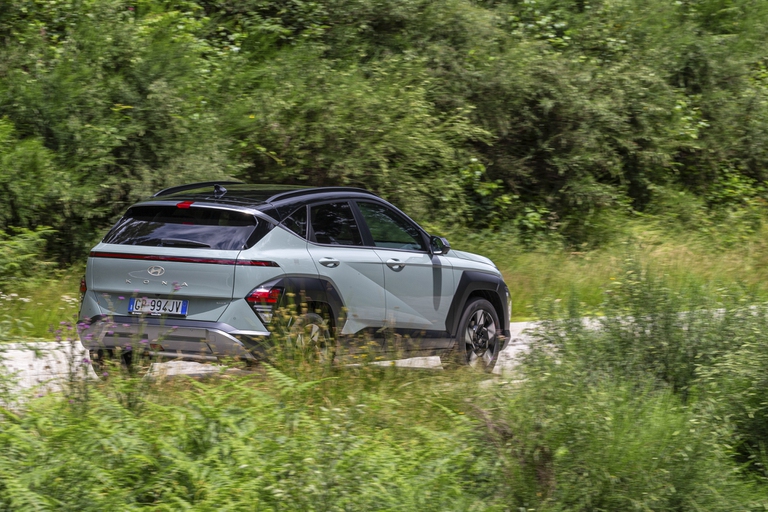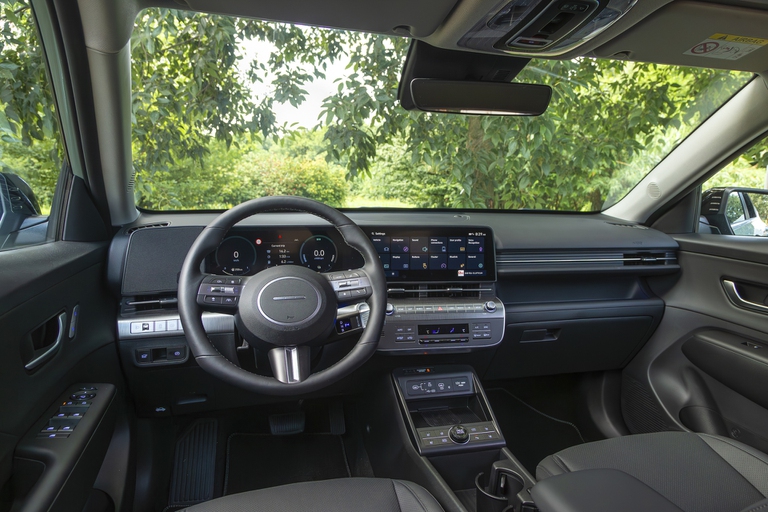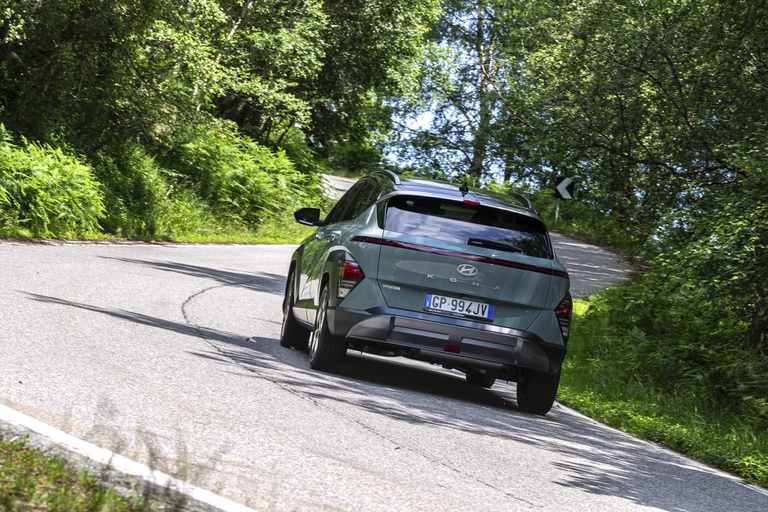- |
In the 2018 we told you about the first electric Kona, a compact SUV with interesting range and sports performance:two versions, one with a 39.2 kWh battery, the other with 64 kWh.A good success.From there, a strategy increasingly oriented towards hybrid, plug-in hybrid and electric.But also at hydrogen with the Nexo, the only model currently available on the market together with Toyota Mirai;The presentation of a new one in the United States dates back to last May electric truck fuel cell.In short, a virtuous journey that has lasted for some time and of which, in 2019, from Amsterdam, we gave you an account of the strategies ofelectrification developed by the Hyundai brand.Since then the Korean manufacturer has never changed its objective:electrify the entire range by 2025.
Thus, Hyundai's journey towards lower-impact mobility continues with the second generation of the Kona.The style changes, updated, more efficient from an aerodynamic point of view, and so do the external dimensions, which grow quite a lot in length, with at least two opposite implications:more habitability for those on board, but also more space occupied in the increasingly crowded streets and car parks of our cities.But the tendency towards "gigantism" is unfortunately an aspect common to almost all builders, a tendency sooner or later destined to reverse itself, at least if we want to return green and livable spaces to people.

Hyundai Kona:the main innovations are in design and dimensions
We were talking about Kona.It has remained an SUV, as was said a few lines above, never mind if a little less compact than before (the length is now almost 4 and 40 metres...), with the version full hybrid, currently the most interesting in terms of consumption and emissions, and the new version electric which will debut in the fall.Needless to say, the price has also increased (the price list starts at 34,500 euros for the hybrid).The external design, as anticipated, has changed a lot, with the "light signature" (a striking LED light bar that crosses both the front and the rear) which is immediately noticeable.Other external details change depending on the trim level.
The hybrid system of the new Kona is the one already known, i.e. on the one hand a 1.6 liter Atkinson cycle petrol engine with 105 horsepower, to which is added a second 32 kWh electric motor (43.5 of the "old" horsepower) and the 1.32 kWh battery.The gearbox remains a 6-speed dual-clutch automatic.Consumption?Those declared speak of 4.5 liters per 100 kilometres, a figure not too far from reality, as we will see below. C02 emissions are 103 or 108 grams per kilometre, a positive figure but not enough to enter the most restrictive restricted traffic zones for free, such as that of Milan which has set the ceiling at 100 grams of C02 since last October.

Efficiency rises and consumption falls
In terms of driving pleasure, a lot of the "old" Kona remains.The power (141 horsepower) is ideal for tackling any type of route.The automatic transmission ensures that driving serenity which reduces stress in the city and in traffic, without penalizing driving around bends which, however, remains very satisfying.THE consumption, as we were saying, with careful driving and taking advantage of all the characteristics of the hybrid (see the regeneration of energy during braking, adjustable with the steering wheel levers), they are very close to the declared figure, which means touching 20 kilometers with a liter of petrol.The data worsens significantly if you drive in Sport mode, It goes without saying, as the French would say.

There are many similarities with the electric Ioniq 5
The positive side of increasing size you can feel it when you get on board the new Kona.The keys are no longer needed and the doors open by themselves, thanks to the digital key to keep in your smartphone (for now only if you own an Apple, Google or Samsung model) or in that of your family, up to a maximum of three users.The space for passengers has grown significantly, the materials are visibly more satisfying, while the attention tocircular economy, with a “eco pack” which includes roof coverings and carpets in recycled PET and a steering wheel made with “bio” paint.For the exteriors, a paint is also available that the manufacturer defines as "ecological", i.e. made up of approximately 20 percent waste tyres.
The rest is very reminiscent of other recent Hyundai models, the electric ones Ioniq 5 And Ioniq 6:steering wheel (with attached gear lever, so the space between the front seats is greater and better exploitable), the large displays from which to manage the infotainment.In short, as before, more than before.With one aspect more evident than others, namely thehabitability, legroom (also increased thanks to the longer wheelbase and seats revised in shape and reduced in thickness), space for luggage.In short, this is a Kona that thinks more about family and less about couples, confirming that flexibility of load (see the split rear seats) which is also very popular with sports enthusiasts.The result is a feeling of overall high comfort, including acoustic comfort.

A camera monitors to reduce distractions behind the wheel
Recent news events and the growing number of road accidents caused most of the time by distractions must make you think.And if on the one hand the announced revisions of the Highway Code attempt to stem the problem, on the other manufacturers such as Hyundai are increasing the functionality of the Adas, i.e. the driving assistance systems which have the task of "assisting" us, of helping us to reduce and avoid road accidents.In this sense the new Kona full hybrid (and the electric version will do even better) marks a decisive change of pace, with the introduction of a new system that monitors (even quite severely) the driver behaviors and, if it detects distractions, attracts attention in a clear way.The Kona is a reassuring car.Even when, again for our protection, he insistently points out that we are exceeding the speed limits, one of the main causes of road deaths in cities.For those who want to learn more, in Milan and up to July 16th in Piazza Gae Aulenti it is possible to see and try out the new Hyundai Kona, hosted in aexhibition area immersive, where you can discover more about electrified mobility.
